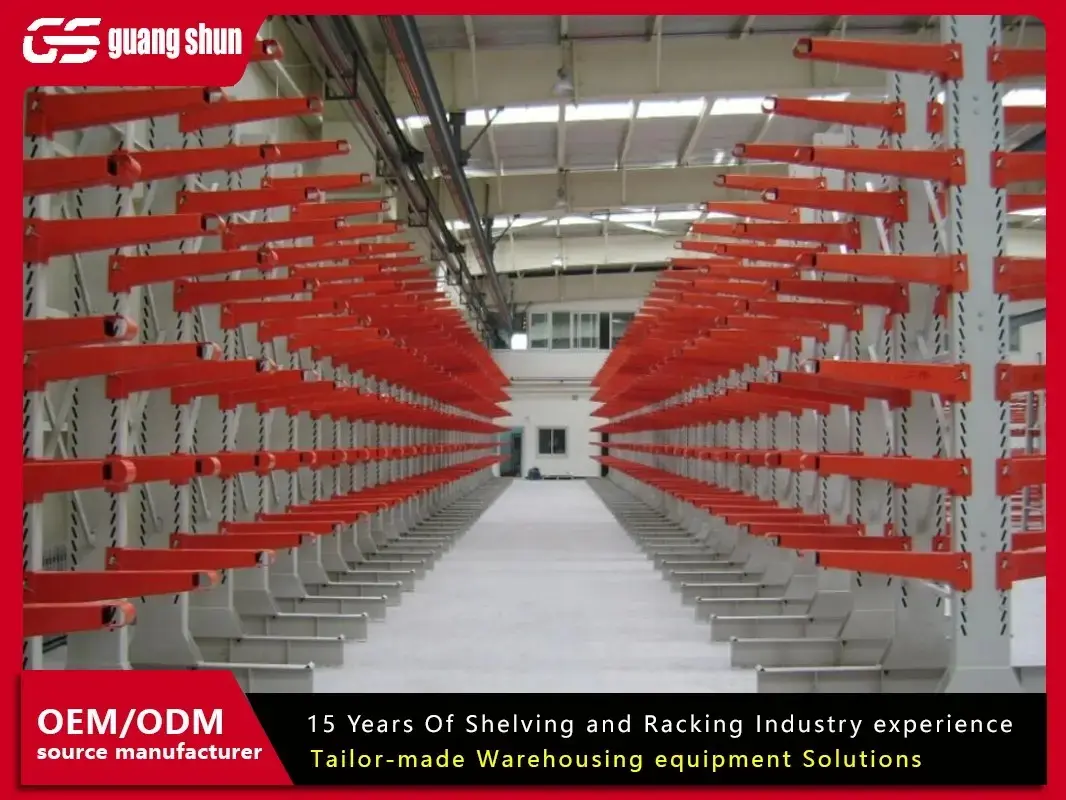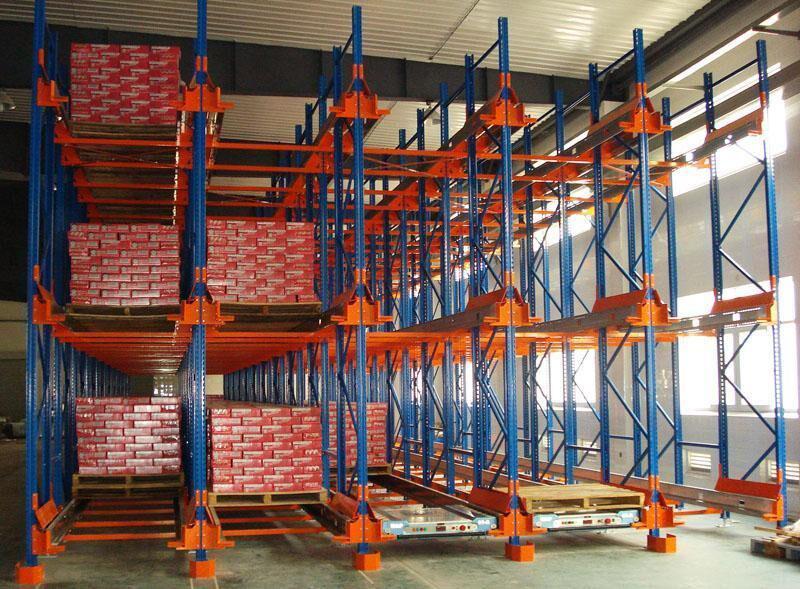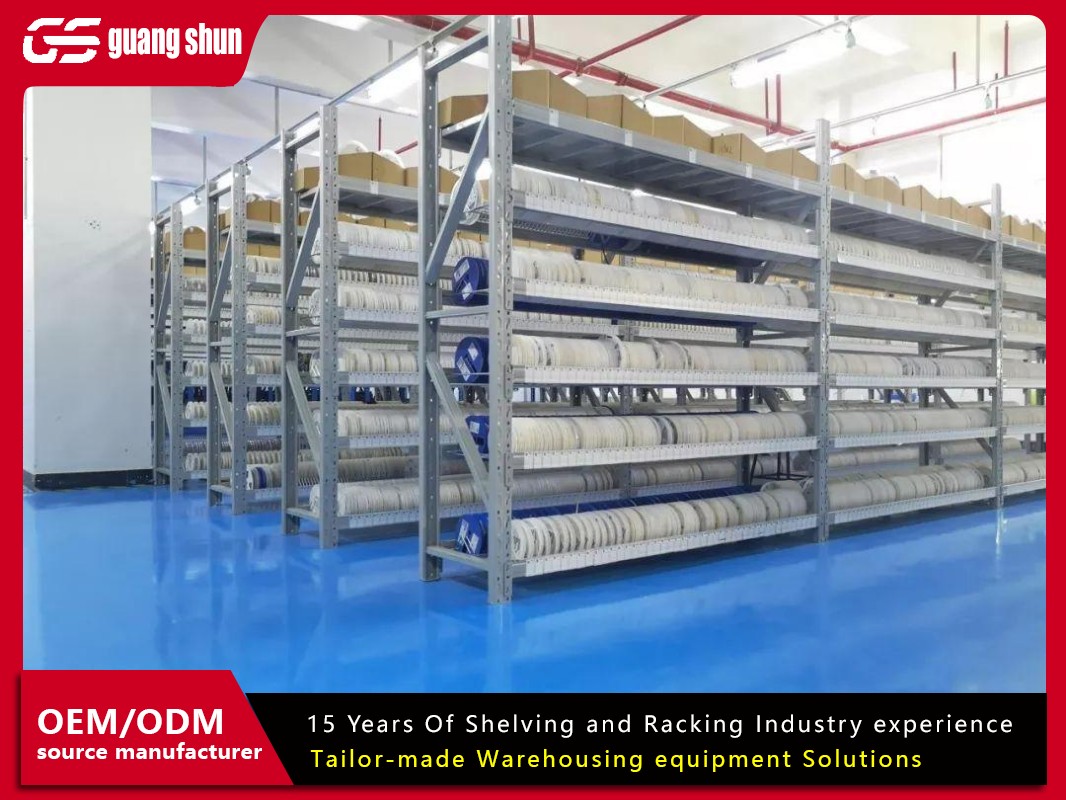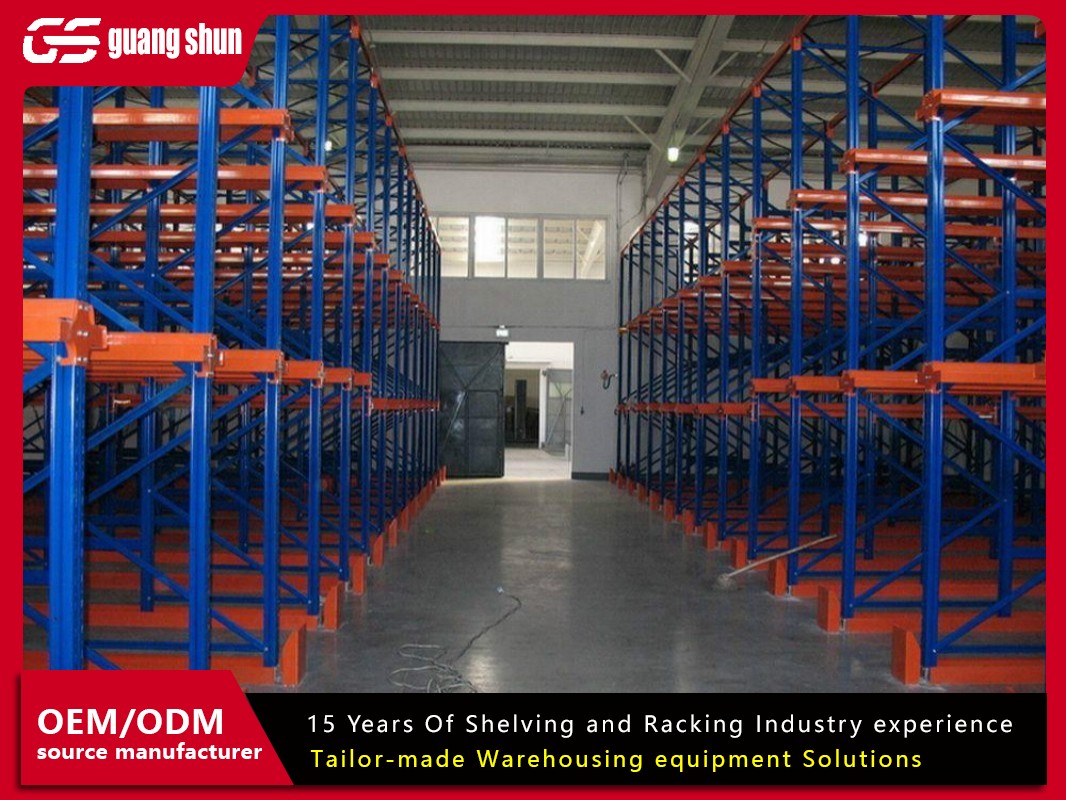In the relentless pursuit of supply chain efficiency and cost reduction, the backbone of any successful warehouse or distribution center often lies in a seemingly simple yet profoundly critical infrastructure: the racking system. Far more than just metal shelves, a well-designed and implemented racking system is the fundamental framework that dictates storage density, accessibility, operational workflow, safety, and ultimately, the profitability of your storage operation. Understanding the intricacies of modern racking systems is no longer optional; it's essential for businesses aiming to thrive in competitive markets. This article delves into five crucial aspects that define and differentiate these indispensable storage solutions.

1. Defining the Core: What Constitutes a Racking System?
At its essence, a racking system is a structured framework specifically engineered to store palletized goods, cartons, or other unit loads in an organized, accessible, and space-efficient manner within a warehouse or industrial setting. Unlike conventional shelving, racking systems are designed to handle significantly heavier loads, often utilizing the vertical cube of a building to maximize storage capacity relative to the floor space used.
The primary components of a standard pallet racking system include:
•Upright Frames: Vertical columns (typically roll-formed steel) that form the main support structure. They feature punched holes or teardrop slots for adjustable beam level placement.
•Beams: Horizontal members that connect between upright frames, creating the support levels for pallets. Load beams are secured with safety locks.
•Braces: Diagonal or horizontal cross-members that provide structural stability and rigidity to the upright frames.
•Baseplates: Plates attached to the bottom of uprights to distribute the load to the floor and provide anchorage points.
•Wire Decking or Pallet Supports: Optional components placed on beams to support pallets (especially partial or non-standard) or smaller, non-palletized items, enhancing safety and load distribution.
The core function of any racking system is to provide safe, organized, and dense storage while facilitating efficient material handling equipment (like forklifts) access. Choosing the right racking system fundamentally shapes your warehouse's operational capabilities.
2. Exploring the Spectrum: Common Types of Racking Systems
Not all storage needs are created equal, leading to the development of various racking system types, each optimized for specific inventory profiles (SKU count, turnover rate, load characteristics) and operational goals. Understanding these types is paramount to selecting the optimal solution:
•Selective Pallet Racking: The most ubiquitous racking system. It offers direct access to every pallet position via aisles, making every SKU instantly accessible (FIFO or LIFO possible). Ideal for warehouses with a high number of SKUs and moderate to high selectivity requirements. While highly flexible, it typically requires wider aisles compared to denser systems.
•Drive-In/Drive-Through Racking: A high-density racking system where forklifts drive directly into the rack structure itself. Pallets are stored on rails or rails with guides on multiple consecutive levels. Drive-In (last-in, first-out - LIFO) has an entrance at one end, while Drive-Through (first-in, first-out - FIFO) has entrances at both ends. This racking system maximizes cube utilization but sacrifices immediate access to every pallet. Best suited for high-volume storage of homogeneous products with lower selectivity needs.
•Push-Back Racking: A dynamic, LIFO racking system utilizing inclined carts on nested rails. Pallets are loaded from the front, pushing previously loaded pallets back. When unloading, the next pallet moves forward by gravity. It offers higher density than selective racking (typically 2-6 pallets deep per lane) while maintaining reasonable selectivity within a lane. Suitable for medium turnover inventory with multiple pallets per SKU.
•Pallet Flow Racking: A high-density, FIFO racking system utilizing gravity. Pallets are loaded on a high end of inclined roller or wheel tracks and flow forward to the unloading end. Ideal for high-volume, fast-moving SKUs requiring strict rotation (e.g., perishables). Requires careful load balancing and consistent pallet quality.
•Cantilever Racking: A specialized racking system featuring horizontal arms extending from vertical columns, designed for storing long, bulky, or irregularly shaped items like lumber, pipes, furniture, or rolls. Offers unobstructed access from the front and sides.
•Mobile Racking (Mobile Aisle): A racking system where entire rows of racks are mounted on motorized bases that move laterally on rails embedded in the floor. Only one aisle is open at a time, significantly increasing storage density (up to 100% more than selective). Ideal for low-turnover, high-SKU count environments where space is at a premium. Requires robust safety systems.
•Mezzanine Systems (Integrated Racking): While technically a structure, mezzanines often integrate with or support racking systems below and/or above, effectively doubling usable floor space within the same building footprint. The supporting structure becomes integral to the overall storage solution.
Selecting the appropriate racking system type is a strategic decision impacting space utilization, labor efficiency, inventory management, and safety for years to come.

3. Engineering Excellence: Design & Load Considerations
A safe and effective racking system is not bought off the shelf; it's meticulously engineered. Design is a critical aspect, involving complex calculations and adherence to strict standards (like RMI - Rack Manufacturers Institute in North America, FEM in Europe, or AS4084 in Australia).
Key design and load factors include:
•Load Capacity & Application: Defining the maximum uniformly distributed load (UDL) each beam level and ultimately the entire racking system must safely support. This includes the weight of the stored goods, pallets, and any racking system components like decking. Load application (centered, offset) is also crucial.
•Seismic & Environmental Factors: In earthquake-prone zones, the racking system must be designed to withstand specific seismic forces. Wind loads (for semi-exposed structures) and snow loads (on roofs above) may also influence design.
•Forklift Impact: Warehouses are dynamic environments. Design incorporates considerations for potential low-level impacts from material handling equipment, often requiring protective measures like column guards and increased safety factors.
•Upright Frame Configuration: Height, depth, gauge (thickness), and spacing of upright frames determine the overall stability and load-bearing capacity of the racking system.
•Beam Specifications: Beam length, profile (shape), gauge, and connection type (teardrop, bolt-together) directly affect their load rating and suitability for the application.
•Decking Options: Wire mesh, plywood, or steel panels add load capacity, improve safety, and support smaller items. Their weight and load distribution must be factored in.
•Floor Conditions & Anchorage: The concrete floor slab's strength, flatness, and anchorage points are vital for the structural integrity of the racking system. Proper anchorage prevents rack movement or collapse.
•Layout & Configuration: The arrangement of aisles, rows, and cross-aisles impacts storage density, accessibility, and operational flow. Software modeling is often used for optimization.
Ignoring proper engineering and load considerations in a racking system can lead to catastrophic failures, product damage, injuries, and significant financial losses. Professional design consultation is non-negotiable.
4. Ensuring Integrity: Installation, Maintenance & Safety Protocols
A perfectly engineered racking system is only as good as its installation and ongoing care. This aspect is paramount for operational safety and longevity.
•Professional Installation: Racking systems must be installed strictly according to the manufacturer's specifications and engineered drawings by trained and certified personnel. Improper assembly, incorrect beam level placement, inadequate bracing, or insufficient anchorage can severely compromise structural integrity. Post-installation inspections are crucial.
•Regular Inspections & Maintenance: Warehouses are active environments. Regular, documented inspections by trained personnel (internal and potentially third-party) are mandatory to identify damage. Key areas to check include:Upright frame damage (dents, bends, especially in the critical "impact zone" near the floor).Beam deflection, damage, or missing safety locks.Loose, damaged, or missing braces and connectors.Damaged or dislodged baseplates and anchors.Damage to decking or pallet supports.Overall plumb and alignment of the racking system.
•Damage Assessment & Repair Protocol: Establish clear procedures for reporting damage. Any damaged component must be assessed immediately. Minor damage might be repairable following manufacturer guidelines, but severely damaged components must be replaced promptly with OEM parts. Never attempt unapproved repairs or modifications.
•Load Management: Strict adherence to posted load capacities is non-negotiable. Overloading beams or unevenly distributing loads poses a severe collapse risk. Ensure pallets are in good condition and properly positioned on beams or decking.
•Operator Training & Awareness: Forklift operators and warehouse staff must be trained on safe practices around the racking system. This includes awareness of load limits, avoiding impacts, proper stacking heights, recognizing damage, and understanding pedestrian safety in racking aisles.
•Safety Accessories: Utilize column guards, end-of-aisle protectors, rack guards, and safety netting to minimize damage from impacts and falling objects.
A proactive approach to racking system installation, inspection, and maintenance is the cornerstone of a safe warehouse environment and protects a significant capital investment.
5. Driving Value: Operational Benefits and Return on Investment (ROI)
Implementing the right racking system delivers tangible and significant operational and financial advantages:
•Maximized Storage Density & Cube Utilization: By efficiently utilizing vertical space (often up to building clear height), racking systems dramatically increase storage capacity per square foot of floor space compared to floor stacking, reducing the need for expensive facility expansion or relocation. High-density systems like drive-in, push-back, or pallet flow further amplify this benefit.
•Enhanced Inventory Accessibility & Selectivity: Well-designed layouts, particularly with selective racking, ensure direct access to specific SKUs and pallets, significantly reducing travel time for material handling equipment and pickers. This speeds up order fulfillment and cycle counting.
•Improved Inventory Management & Rotation: Systems like pallet flow enforce FIFO rotation, critical for perishables or time-sensitive goods. Clear organization within the racking system simplifies inventory control and reduces errors.
•Increased Operational Efficiency & Productivity: Faster access, reduced travel distances, optimized workflows, and minimized handling times directly translate to higher throughput and lower labor costs per pallet moved or order picked. Integration with Warehouse Management Systems (WMS) further optimizes put-away and picking paths.
•Enhanced Safety: A properly installed, maintained, and loaded racking system, combined with safety protocols and accessories, significantly reduces the risks of pallet falls, collapses, and product damage, creating a safer work environment and lowering insurance costs.
•Protection of Goods: Keeping goods off the floor protects them from potential water damage, dirt, and impacts. Proper support via beams and decking prevents pallet sagging and product damage.
•Flexibility & Scalability: Many racking systems, particularly selective, offer excellent adjustability (beam levels can be reconfigured) to accommodate changing inventory profiles or business needs. Systems can often be expanded or reconfigured relatively easily.
•Long-Term ROI: While requiring an initial investment, a well-chosen and maintained racking system delivers substantial cost savings over its lifespan through reduced real estate costs, lower labor expenses, minimized product loss, and improved operational throughput. The ROI calculation must factor in these ongoing efficiencies.
Investing in a modern, engineered racking system is not merely a storage expense; it's a strategic investment in the core efficiency, safety, and scalability of your entire warehouse operation.
Conclusion: The Strategic Imperative of the Right Racking System
The racking system is far more than static warehouse furniture; it is the dynamic, engineered foundation upon which efficient, safe, and profitable warehousing operations are built. From the fundamental components and diverse types to the critical engineering principles, rigorous safety protocols, and demonstrable operational benefits, every aspect of a racking system demands careful consideration. Choosing the wrong system, neglecting proper design, or failing to maintain it diligently can lead to inefficiency, accidents, and significant financial loss. Conversely, investing in the right racking system, tailored to specific inventory and operational needs, and committing to its professional installation and ongoing maintenance, unlocks substantial value: maximizing space, accelerating workflows, enhancing safety, protecting inventory, and delivering a compelling return on investment. In today's competitive logistics landscape, optimizing your warehouse storage with the appropriate racking system is not just an option – it’s a strategic imperative for sustainable success. Careful planning and partnership with reputable suppliers and engineers are essential to harness the full potential of this vital warehouse infrastructure.







